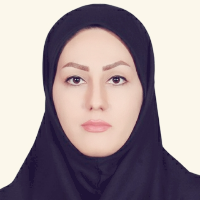A constructional study of the compounds of body part “Sar” (head) in Persian
This paper aims to examine the construction of the word-formation pattern [sar-X] (compounds of the body part “head”) in Persian and investigate its semantic variations, the most general schema and subschemas both synchronically and diachronically employing the Construction Morphology approach (Booij, 2010). To this end, firstly, a collection of 178 compound words consisting of “sar” as the first constituent were collected from Bijankhan Corpus, Comprehensive Sokhan Dictionary, Dehkhoda and Zansoo Dictionaries and also from a Google search. Secondly, the historical data were collected from a comprehensive search of Farhang-yar Corpus consisting of the historical information about the words, their origins, meanings and changes in time from the 4th century onwards in the library of Academy of Persian Language and Literature. Then, all collected words were assigned to different categories based on their semantic variations and the specified categories were closely studied as follows: 1-Feature consisting of a) agentive adjectives and in some cases, object-oriented adjectives; b) Simple (descriptive) adjectives, 2-Entity consisting of a) job names; and b) other names such as instruments and objects. It is worth mentioning that in addition to Booij’s Construction Morphology (2010) as the main theoretical framework of this research, we benefited from Rainer’s views (2005) on semantic changes in word-formation patterns so that we can capture all the semantic extensions and developments of the word-formation pattern [sar-X], and in line with Rainer (2005) we divided all semantic change mechanisms involved in the construction [sar-X] into two main categories namely 1-Semantic/conceptual mechanisms (cognitive factors) such as metaphor, metonymy, approximation, reanalysis, and analogy, and 2-Non-semantic factors such as (historical) ellipsis, homonymisation, borrowing and loan-translation.The results reveal that two general constructional schemas and several subschemas have command of this construction and the central meanings “an entity related to SEM sar and X” and “distinctive feature of an entity related to SEM sar and X” are the most abstract pairings of form-meaning inferred from the products of this word-formation pattern and some of these subschemas refer to the meanings such as “the above part of SEM X”, “head SEM X”, “main SEM X”, “the best in SEM X”, “the start point or the end of X” and “distinctive feature of sth/sb whose head is X (has got X). This implies that the [sar-X] pattern is basically a construction with multiple functionality. Furthermore, it was revealed that the polysemy we deal with here is not at the word level but it is at the construction level (a type of constructional polysemy with multi-levels of abstraction for the constructional idiom [sar-x]) and the meaning contribution of the mentioned compounds lies within the construction [sar-X] on the one hand, the meaning of the constituents, the operation of conceptual metaphor (metonymy) and the encyclopedic knowledge on the other. This implies that the constructional idiom [sar-X] is basically both an adjective-making and simultaneously a noun-making construction and the dual usage of some of its compounds is through conversion activated by metonymy at the lexicon level. That is why the conceptual metonymy and metaphor play a significant role in determining the meaning of the mentioned words. Also, it was revealed that there is no need to be a complete and one-to-one correspondence between a word and the word-formation pattern from which the word is derived, as Rainer (2005; pp. 430-431) points out, it is assumed that human communication, in order to be effective, does not require a 100% match between model and copy, pattern and neologism (Gloning 1996; p. 152). In other words, an approximation, in many cases, will suffice if the hearer is able to bridge by inference the distance between model and copy. This is especially the case if model and copy are linked by metaphor or metonymy. That is why, approximation will thus be defined as a process of word formation where the relation between a pattern of word formation and a neologism formed according to it is not one to one, but mediated by metaphor or metonymy. Among the products of this construction also there are few words that have some exceptional properties, although they are regular in most respects, and for these cases, we benefited from the crucial notion of default inheritance which means “the specification of a word for a particular property is inherited from the dominating node, unless the actual lexical entry has another specification for that property” and thus, these few cases were considered as some objective instantiations derived from the higher hierarchical and more general constructional schemas, such as [N-X]A, [N-N]N, or [N-V]A to generate different kinds of compound words which take their constructional licenses from these abstract schemas rather than from the word-formation pattern [sar-X].Finally, postulating a paradigmatic nature of word-formation and positing the concept of construction as a basis for argument, Construction Morphology can account for our data and necessitate reevaluation of the demarcation between derivation and compounding at least in compounds of the body part “head” in Persian.
- حق عضویت دریافتی صرف حمایت از نشریات عضو و نگهداری، تکمیل و توسعه مگیران میشود.
- پرداخت حق اشتراک و دانلود مقالات اجازه بازنشر آن در سایر رسانههای چاپی و دیجیتال را به کاربر نمیدهد.



